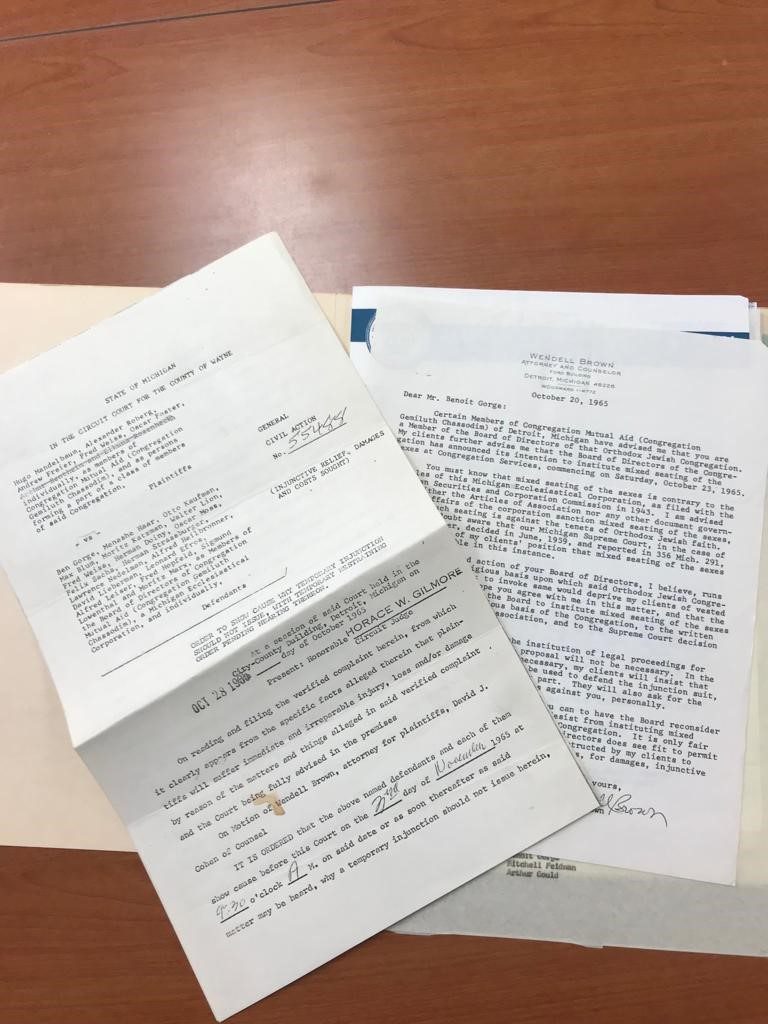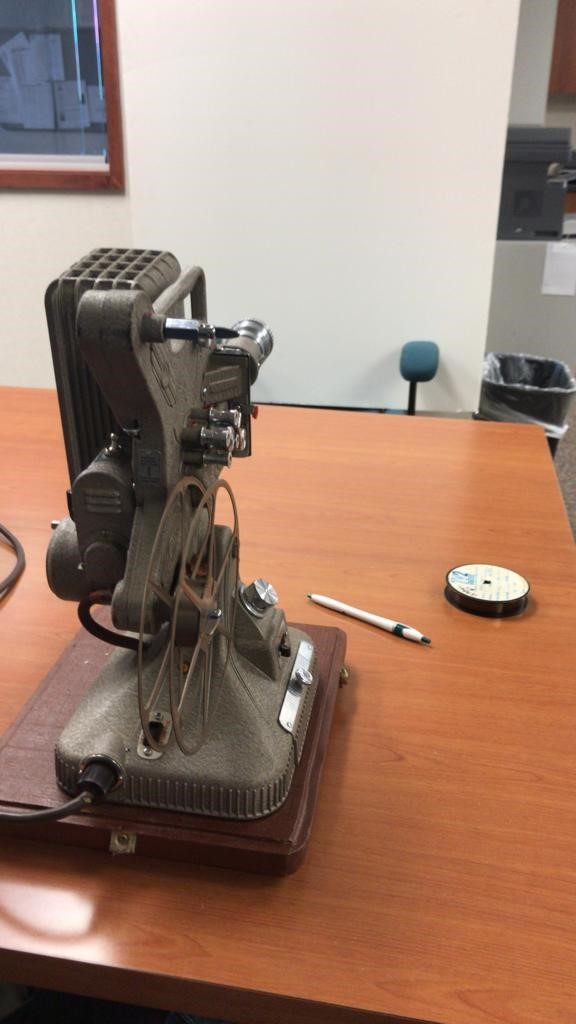Processing the Congregation Beth Ahm papers at the Jewish Community Archives (JCA)
By Laura Williams, MLIS student
The Practicum experience as a MLIS student was some of the most valuable hours of the program. Throughout the summer, I saw how the theories and best practices taught in the courses came to life as I processed a new collection from start to finish.
My practicum was spent at the Leonard N.
Simons Jewish Community Archives of the Jewish Federation of Metro-Detroit or,
for short, the Jewish Community Archives (JCA) in Bloomfield Hills, MI. Robbie
Terman is the Director of the JCA and was an incredible guide during the
practicum. My current job is also at an archive that collects and makes
available Jewish collections, so I was automatically excited to expand my
knowledge and learn from another part of the community in order to build skills
for a topic I am passionate about.
Though I was able to get my hands dirty
(literally) with a few different projects like working with 16mm film from the
mid 20th century, my main project was to process the Congregation Beth Ahm
papers. Congregation Beth Ahm is a synagogue located in West Bloomfield, with
an incredibly rich history. I have passed the building hundreds, if not
thousands of times in my life, but never knew much about it, until now! From
the beginning, I realized that this was not an ordinary collection or even
organization. Unlike the synagogue collections I have worked with in the past,
Beth Ahm is actually a combination of about 8 different synagogues that merged
over 120 or so years in Detroit. "Ahm" is an acronym, and was originally
Abraham Hillel Moses, which were the three biggest, or final three synagogues
that merged. This aspect of the collection created a vast amount of decisions
about how to organize, file, and name the documents for potential researchers.
Due to the many organizations under the Beth Ahm umbrella, consideration was
made for those users that may be only looking at the papers of one of the
merged synagogues and not simply Beth Ahm's history since the late 1970s when
the final merge occurred. Along with the guidance of Robbie Terman, I created a
system that defined rules for organization as I put myself in the mind of a
variety of researchers to best organize and describe the collection.
There was a lot to learn, not only about how
to process in a small archive, but I learned a lot about the Metro-Detroit
Jewish community. Beth Ahm's story added many pieces to the bigger picture of
how the community came together, moved, adapted, and even changed its
practices. One example that stuck out to me was when I discovered some of the
congregants actually sued the synagogue after the Board of Trustees instituted
a new policy that allowed mixed-gender seating. For background, in traditional
or orthodox Jewish synagogues, it is common practice to have separate areas for
men and women. This new policy was a big change for a synagogue that had been
traditional, but it shed light on the larger community's shift toward a more
progressive or liberal Judaism.
It was incredibly valuable to work with an
archivist that is a "lone-arranger." Ms. Terman was able to offer valuable
insight, tools, and creativity within an archive that has one professional and
has to advocate for her department within a larger institution. Ms. Terman also
took time to show me how she has found resourceful ways to digitize and migrate
videos for her oral history website, and proved that low budget does not mean
impossible. By piecing together skills she has picked up in her information
professional career, Ms. Terman has found how she can use a free version of one
type of software and pair it with another to achieve the same goal as
purchasing an expensive option. I am grateful that I was able to take in not
only this example but many others from Ms. Terman through my hours spent at the
JCA.


Projector used to view 16mm film